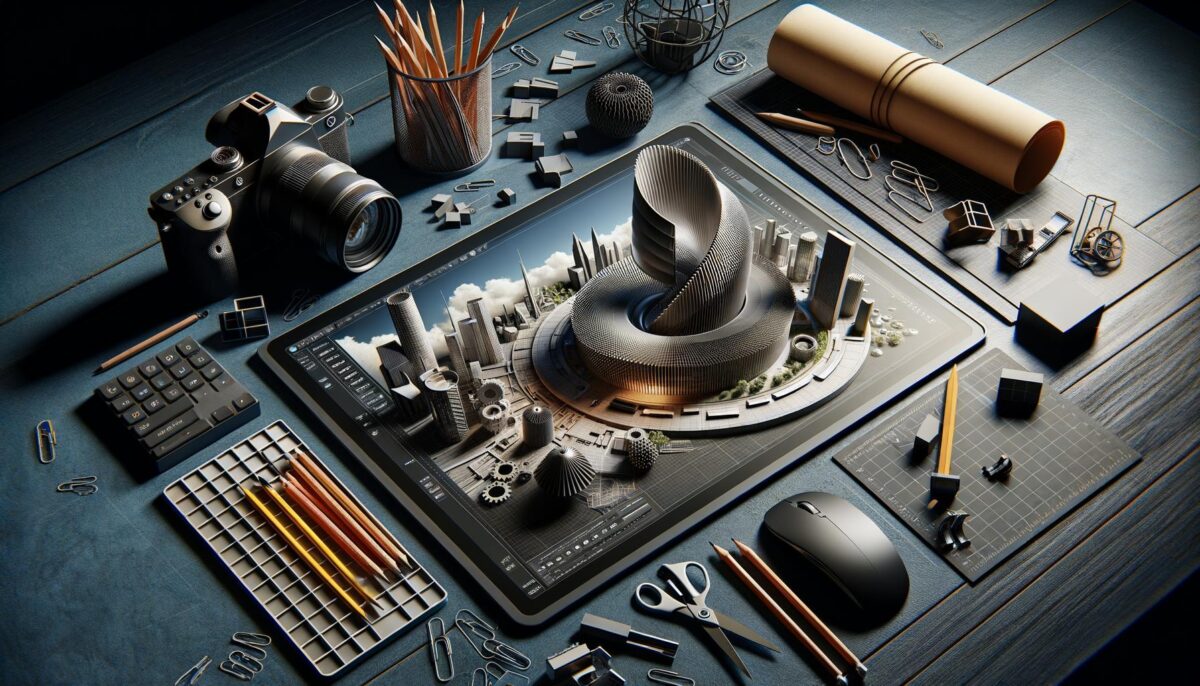Understanding CAD and 3D Modeling Software
Computer-Aided Design (CAD) and 3D modeling software are crucial for creating precise designs and prototypes. These tools allow designers to bring their concepts to life, making it easier to communicate their ideas and refine them before production. From industrial designers to architects, professionals across different fields rely on these software solutions to ensure accuracy and efficiency. Whether you’re drafting a building blueprint or sculpting a digital model of a new product, the right software can make a substantial difference in your workflow.
CAD software typically provides a wide range of functionalities including:
- Detailed 2D and 3D drawing features
- Simulation and analysis capabilities
- Tools for testing designs under various conditions
On the other hand, 3D modeling software often emphasizes sculpting, rendering, and animation, offering intuitive interfaces to craft intricate models from scratch. Choosing the right tool depends on your specific needs and the nature of your projects.
Key Features of Prototyping Software
In the product development process, prototyping plays a pivotal role. Prototyping software helps in creating quick and cost-effective models of a design. It allows designers to explore different ideas, test functionalities, and make necessary adjustments before final production begins. The main features of good prototyping software include:
- User-friendly interfaces for beginners and professionals alike
- Rapid model generation capabilities
- Seamless integration with other design tools
- Support for a variety of materials and manufacturing processes
The choice of prototyping software should align with the technical skills of the user. For instance, a software with a steeper learning curve might be better suited for advanced users, while simpler interfaces can be beneficial for beginners.
User-Friendly Options for Beginners
For those new to product design, selecting user-friendly software is crucial. Beginners should look for tools that offer simple navigation, comprehensive tutorials, and supportive communities. Many modern design platforms cater to these needs by providing basic to advanced functionalities without overwhelming new users. Some essential features to consider include:
- Intuitive drag-and-drop interfaces
- Learning resources like video tutorials and forums
- Cloud-based access for ease of use
While professional-grade software may offer the robustness that advanced tasks require, some might find the introductory complexity a barrier. Thus, starting with a more simplified tool ensures a smoother learning curve and a more enjoyable entry into the world of design.
Professional Tools for Advanced Designers
For experienced designers, advanced software tools offer a wealth of features that cater to intricate projects. Such platforms provide comprehensive tools for detailed work and integration capabilities that support complex designs. Professionals often seek out software that can handle complicated simulations and collaborate efficiently. Key aspects include:
- High-end rendering and simulation tools
- Robust compatibility with other systems and applications
- Customizable interfaces for specific project needs
By leveraging professional-grade software, experienced designers can push the boundaries of creativity and functionality in their work. Having access to such tools means fewer limitations in exploring innovative ideas and executing them effectively.
Choosing the Right Tool for Your Needs
Deciding on the right design software involves understanding your specific requirements and skill level. Beginners should prioritize learning the basics with more accessible tools, while professionals might focus on software offering advanced features. Consider the software’s ability to integrate with other tools, its support community, and the cost when making a choice.
Regardless of where you stand in your design journey, there is a plethora of software available to cater to every need. It’s about finding the right balance between your current skills and the complexity of the software, ensuring a seamless design process tailored to your comfort and project demands.
Conclusion: Embrace the Right Software for Your Journey
Navigating the landscape of product design software can be a rewarding endeavor, whether you are enhancing your current skills or diving into design for the first time. By selecting the appropriate tools that cater to your expertise level, you can unlock new creative potentials and efficiencies in your workflow. From CAD to prototyping and beyond, each software option provides unique features that can significantly impact the success of your projects. Embrace these tools as allies in your design journey, and let them facilitate the translation of your creative vision into tangible realities.
